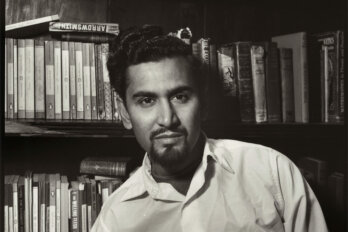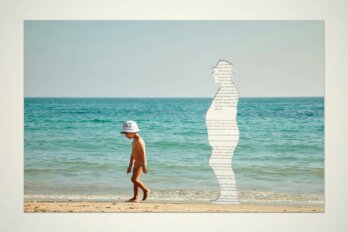Can you really teach people to write? I might pose a parallel question: do we really teach people to be philosophers or mathematicians? Don’t we, instead, hand over to our budding philosophers or mathematicians a few basic tools that permit them to self-evolve?
Perhaps what we really mean when we say we can’t teach writing is that we can’t teach someone to be Virginia Woolf. On the other hand, a number of our most accomplished writers were, early in their lives, enrolled in writing courses: Eugene O’Neill, Tennessee Williams, Arthur Miller, Wallace Stegner, and Flannery O’Connor, to name a few.
Ah, but writing is God-given, it’s often said, the implication being that the writer is also God-protected and superhuman, an uncomfortable assumption for most of us these days. Those who reject the God-given thesis sometimes believe that Bohemia is the place to learn to write. But Bohemia, that mythical realm—meaning freedom from compromise and convention, an excited, open state of mind, a portable set of liberties that fertilize the ground from which writers spring—has not much flourished in North America.
Writers are romantically believed to be seekers of solitude, but in fact they have historically gathered around centres of power. Today the university has become one of those power centres, delivering encouragement in the shape of course offerings and informed tutoring. A centre of learning, it can be argued, is an appropriate venue for the teaching of writing since it also possesses libraries, bookstores, accommodation, staff, classrooms—and, most important, people who know how to write and who are willing to share their knowledge and intuition with those who are learning. Haven’t writers always, in fact, functioned this way-teaching, coaching, mentoring, advising, editing and influencing other writers in garrets or coffee houses or the courts of kings or in country houses, through correspondence, or by the simple dissemination of their books? The place of interaction has shifted; a slight and gradual formalization has occurred, but the process is not radically different from what it’s always been.
Early writing programs, perhaps in order to defend their legitimacy in the university, were often rather traditionally organized, using textbooks and assigning letter grades for weekly assignments. They were, in fact, institutions that ran on the gas of criticism rather than creativity. Gradually the workshop evolved, becoming the cornerstone of most creative writing programs, and there are some who believe that this manner of teaching has influenced the way learning has come to be shared in other enlightened (that is, non-hierarchical) disciplines. Basically, workshopping in creative writing programs means that the work of students is read and critiqued by members of the class and by the writer/teacher who acts as a sort of group leader. Ideally students are drawn out, cajoled, persuaded, questioned, nudged, niggled, and encouraged to make a new and personal set of criteria, rather than fed a critical line or one way to approach creating fiction.
If this methodology sounds vaguely, nostalgically familiar, it may be because it gestures toward the methodology of the medieval or even classical university. Obviously students are not taught how to be original, but they are made aware of non-originality and they are exposed, though not perhaps systematically, to certain skills involved in writing: setting up a scene and furnishing it, situating a narrative in time and space, controlling the flow of information, creating a mood, deciding who is telling the story and why.
In 1973, all the teachers of creative writing in colleges and universities in the United States were invited to a conference in Washington, DC, hosted by the Library of Congress. Five hundred writers/teachers attended, among them such luminaries as John Barth, Wallace Stegner, John Ciardi, and Ralph Ellison. The animated discussions between the participants brought to light some disturbing revelations. Only about one percent of creative writing students became writers. Ninety-nine percent of students of the day were “lured by the glamour of the profession or the desire for money and fame.” (I can only suppose that these numbers were arrived at anecdotally rather than statistically.)
Three other discoveries came out of the meeting. 1. No one knows how to teach writing. 2. In particular, no one knows how to teach the talented. And 3. The talentless can be taught only a little.
It might be thought that these dismal conclusions would spell the end of creative writing teaching in America. Exactly the opposite occurred. Courses in creative writing proliferated, writer-in-residence programs were established in all corners of the country, writers’ retreats (often with a writer/teacher available) flourished, and degree-granting writing programs grew in number and in power, and their presence was more and more seen as a sign of prestige for their mother institutions.
Creative writing courses are often the only place in our society where writers can come together. They are our salons, our “left banks,” our wine bars, the laboratories of our literature. Creative writing classes give to students of literature a glimpse of the way in which literature is made, how difficult it is and how fragile and fleeting the creative impulse is. A certain sharpening of critical ability occurs in these classes, at least some of it self-directed. In addition, writing courses seize upon that compulsion most young people have to write a poem or story, to say something in words that are entirely their own. A social function is served, too, I think. These classes are, after all, small and intense, and deal frequently with highly personal material. A student once told me that reading his own writing to a class was like standing up and taking off all his clothes. Certain standards of kindness and trust must be established and adhered to. I think many of these social transactions are useful, more useful in the long run perhaps than aesthetic transactions.
At the time my novel about Judith Gill was published (Small Ceremonies, 1976), I had had no experience at all with creative writing classes, either as student or teacher, and in my “creative” description of such a class in Small Ceremonies I turned out to be partly right and partly wrong. I was right and I can only suppose that I had picked up a certain amount of random information by a kind of osmosis—about the general informality of such classes—the seventies were, after all, the days of encounter groups, of such experiments as the human potential movement. I was right about there being a wide variation in students’ backgrounds and ages, right on the whole about the size of classes—they do vary from ten to twenty—right about those little class exercises, and right, too, about the rather nervously offered and vaguely worded student criticism. But I was wrong about student boldness, the desire to shock, and student willingness to abandon themselves in their writing and to their classmates. Creative writing students are often painfully guarded; it is one of the great problems of teaching. And I was wrong about student commitment to philosophical or political causes. It is the self that chiefly interests them, the lonely self, the misunderstood self, and this produces a kind of writing that is often claustrophobic and, worse, bewilderingly private. Finally, I was wrong to believe that students exhaust themselves in their initial cathartic explosions. In fact, it takes several weeks to establish an atmosphere of trust in a class, and it is only then that creative and critical skills begin to grow.
I try to establish an atmosphere of creativity, not correction, and I begin each new class by introducing myself, asking students to use my first name, Carol, since I intend to use their first names. Sitting around a seminar table, it seems to me, demands the informality of first names, although I have no idea whether other writer/teachers feel comfortable with this particular form of familiarity. I explain to my newly registered class, as undramatically as I can, that I am a writer, and I list briefly what I have written. I outline in about a hundred words or less what I consider writing to be about, and for and of, and then I make a point never to refer again to my own work or, directly, to my own writerly views. When teaching, I insist on setting a distance from my own work because I am wary of imposing my ideas and my methodology on developing writers who are, as you might imagine, almost dangerously open to suggestion.
(I recall teaching a short fiction class at the University of British Columbia in which the previous instructor had decreed that writing in the first person was masturbatory and therefore indecent—it took me a full year to restore confidence in the first person voice.) Each writer evolves a method of writing or an approach to writing that is personally productive and engaging and rewarding. I write 500 words a day, but I am not at all anxious to press this limit on eighteen-year-old students or even on forty-year-old students. I write every day, whether or not I am ignited by the force of what some call the fire of inspiration, but I would not want to suggest to others that their thirty-six-hour or sixty-four-hour flights of inspired intemperance are wasteful and self-indulgent because I am not at all sure they are.
I make it a point to declare to the class at our first meeting that everything—that is, all material—is open to scrutiny except that which is pornographic or sexist-and occasionally we disagree as a class about the limits of these two reservations. What constitutes sexist writing? Why is a long, voluptuous and explicit sex scene acceptable and an off-hand reference to a hateful, hairy-legged woman not? This question came up in my class once and I’m not sure it was satisfactorily resolved.
I always ask my students at the first class to introduce themselves and to reveal why they have registered for the course. Only very occasionally does a student say: “I want to become a great writer.” Generally they respond by saying modestly: “Because I want to learn to sharpen my images, or write better dialogue, or test my material on an interested audience.” Once a woman replied that she wanted to discover what a story was. Good luck, I said to myself, since I’ve never been able to frame a satisfactory definition myself.
I ask them to write down what they consider to be the hardest thing about writing, and over the years I’ve collected such responses as: Knowing how to begin. Knowing when I’ve reached the end. Getting the thoughts in my head onto paper. Finding time. Learning to concentrate. Finding my own voice. Avoiding libel and/or injury to others—chiefly mothers. (Mothers, I’ve found, take a hard knock in creative writing courses.)
Believing students should write the stories they would like to read, I brace myself and ask new students what they read. Some confess to reading nothing but texts for their other classes. Almost all of them read Stephen King and Sidney Sheldon; younger students are wrapped up with Kurt Vonnegut; one or two will have read Margaret Atwood, usually for a class. A few have read Alice Munro and Anne Tyler. Most say they prefer to read novels, but they want to write short stories. Why? Because the size of the novel frightens them.
I begin each three-hour class with a short discussion of some aspect of writing—tension, tone, voice, and so on. Then we do an in-class writing exercise. Over the years I’ve collected certain exercises that work, at least most of the time. I might for instance pass around a photograph of a human hand, and ask them to write for six minutes, using the voice of the owner of the hand. I then give them two or three minutes to edit their material, and then we go around the table reading what we’ve written. Or I might give them a single word, the word “pink,” for instance, and ask them to run with it in any direction they choose. These exercises do a number of things, showing the students how variable responses can be and how readily available the source of creativity is. Often I repeat an exercise and say, “Take it further at this time.” It’s as though they need someone to say: Be a little crazy. Astonish me.
Excerpted from Startle and Illuminate: Carol Shields on Writing edited by Anne Giardini and Nicholas Giardini. Copyright © 2016 Carol Shields Literary Trust. Published by Random House Canada, a division of Penguin Random House Canada Limited. All rights reserved.






